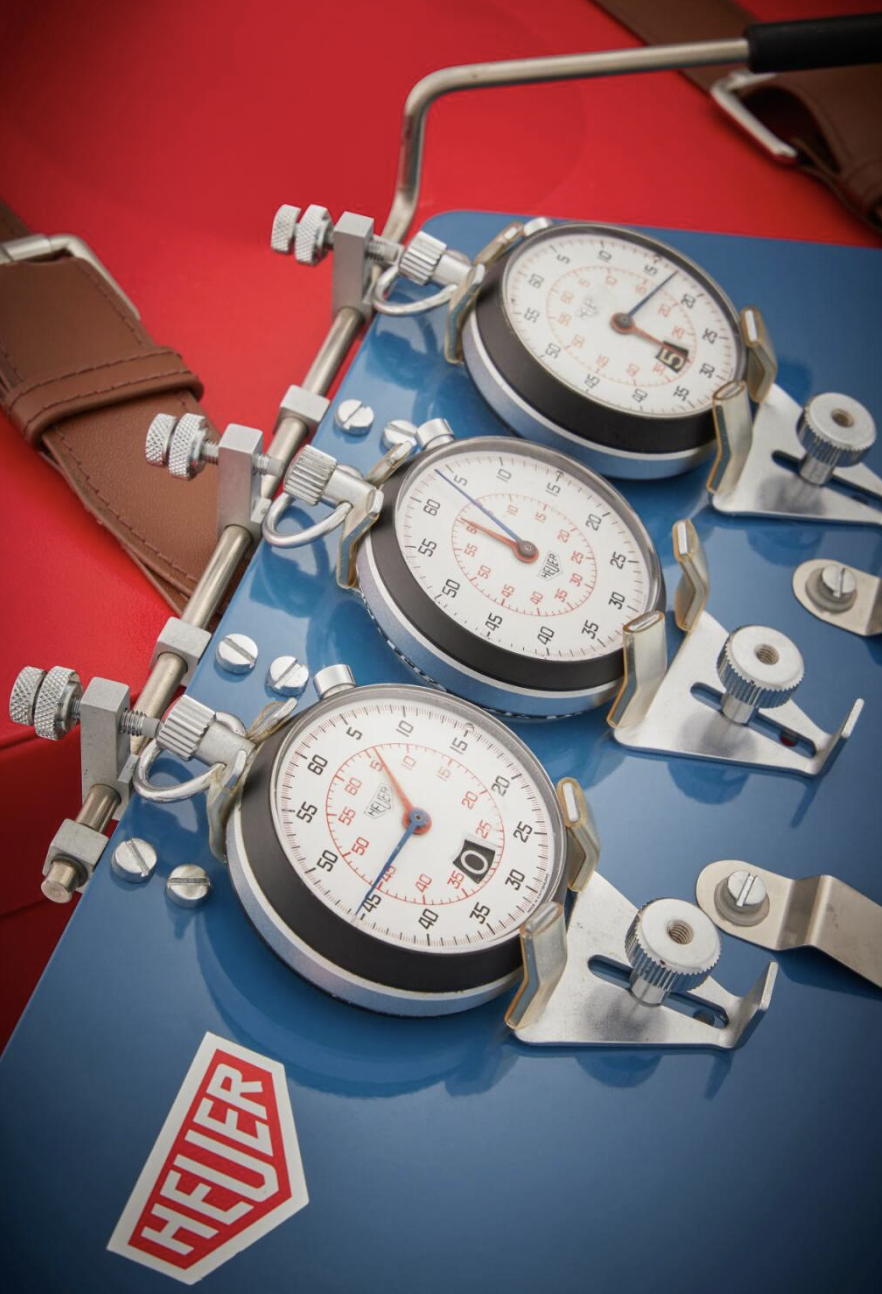Multisequence Timing Board, mounted synchronized stop watches with stainless steel actuation levers, Circa 1965
During the halcyon days at the pinnacle of mechanical timekeeping in the 1960s, just before the tidal wave of electronic options would sweep over, the timing board seen here would be as vital a piece of equipment in the pit lane as a wheel gun or a helmet.
While timing data was provided by the circuit, it was often very delayed as had to make its way from the stopwatch of the club amateurs who were engaged by the promoters at the circuit, to the boards placed on the start finish straight. The level of accuracy was debatable as, not only were those tracking the times often not experienced in using a stopwatch to 1/10th of a second let alone 1/100th, there were often errors in the transcription of the data on to sheets, and sometimes even the counting of laps by drivers.
As a result, it was expected for all teams to engage someone who was experienced with a stopwatch to track their own times and those of their rivals. By using a board such as the one shown here, successive laps could be tracked with a simple pull of the lever stopping one counter, starting the next, and resetting the third to ensure that all figures could be recorded in a timely fashion without risk of mis-reading the time.
Today these timing boards represent artefacts from a bygone era in motorsport but would make for an exceptional cool addition to the team toolkit at Rennsport Reunion or Goodwood Revival, teaching a new generation the importance of accurate, independent timekeeping.



